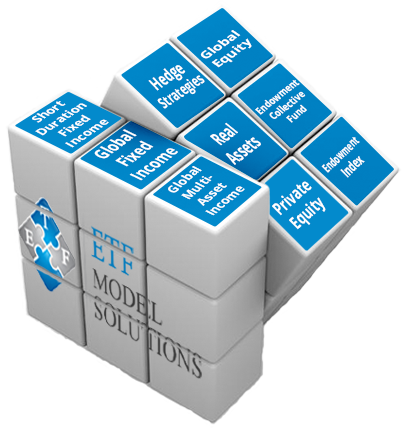What are Exchange Traded Funds Endowment Wealth Management
Post on: 23 Май, 2015 No Comment

As their name suggests, exchange-traded funds (ETFs) are investment funds that trade openly on the stock exchange. Although they have become increasingly popular of late, ETFs have actually been around since the late 1970s.
ETFs are structured similarly to mutual funds in that each share that an investor purchases represents partial ownership of an underlying group of securities. Investors in both mutual funds and ETFs can achieve diversification through a single purchase. However, ETFs can be bought and sold on an exchange throughout the day, whereas mutual funds can be bought or redeemed from the mutual fund company only after the close of trading. Thus, ETFs combine the diversification potential of a broad portfolio with the simplicity of trading a single stock on an exchange.
The first ETF was designed to track the performance of the S&P 500. And the majority of ETFs on the market today stay true to their passive “indexing” heritage—tracking specific indexes in the attempt to “be” the market, rather than beating it.
However, in an effort to outperform the market, some managers create specific parameters, screens or weightings when selecting securities for their ETFs. For example:
- A fund manager might start with the S&P 500 Index but choose only those stocks with the highest dividend yields.
- Another manager may create a basket of securities to invest in assets not typically covered by an index—such as currencies.
These managers are, in effect, combining elements of active and passive investing by actively creating their portfolios, which are then more passively managed on a day-to-day basis.
ETFs differ most significantly from mutual funds in the way they are bought and sold. ETFs behave like stocks, and investors can buy or sell shares at any time throughout the day. Like stocks, ETFs also offer flexible trading options, such as stop and limit orders (a stop order sets a specific price at which ETF shares are to be purchased or sold, while a limit order sets a maximum or minimum price at which you are willing to buy or sell ETF shares, respectively) and the potential for such tactical hedging strategies as selling short (borrowing ETF shares to sell now in the hopes that you can buy them back more inexpensively later) or on margin (taking out a loan to buy ETF shares, or using ETF shares as collateral in an effort to leverage your existing portfolio beyond your initial investment).
Another potential advantage of ETFs is that, unlike many mutual funds, they typically have no sales charges. Plus, like most index funds, they generally offer low management fees. However, there are trading costs associated with an ETF, as there are for stocks. In many cases, low fees and expenses can outweigh trading costs, but this will depend on how frequently and in what quantity an investor trades.
ETFs offer a number of potential benefits that can make them extremely effective for helping investors reach specific long-term goals:
- Diversification
- Low fees and no sales load
- Intraday liquidity
- Tax efficiency
- Transparency—and much more
ETFs come in every style and asset class in the investment rainbow. They can help investors generate income, achieve long-term growth, gain more complete diversification—and much more.
As the table below illustrates, ETFs offer a number of benefits that can make them extremely effective in helping investors reach specific long-term goals. Additionally, as with mutual funds, ETFs come in every style and asset class in the investment rainbow. They can be used to complement mutual funds in an existing asset allocation, to replace mutual funds—or for an entire portfolio.














